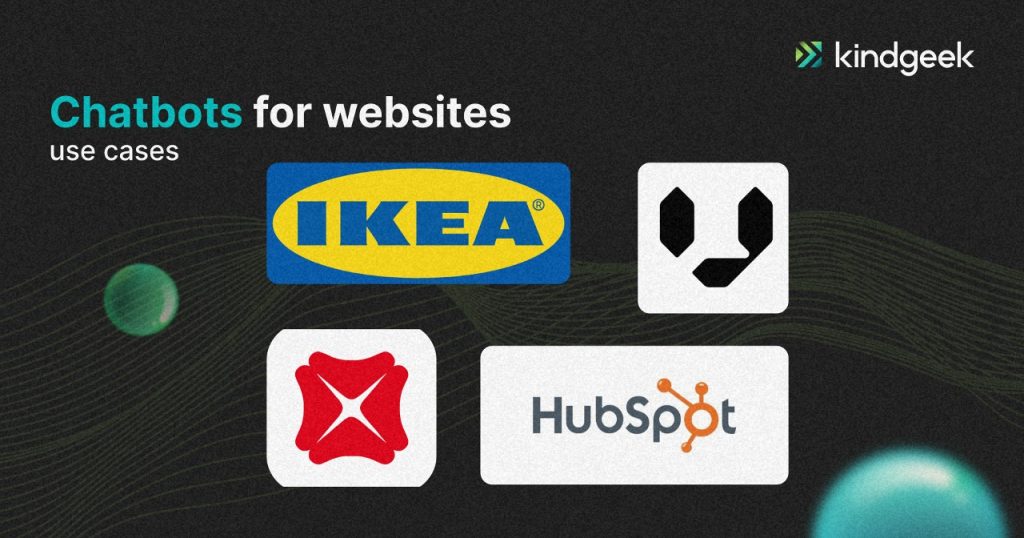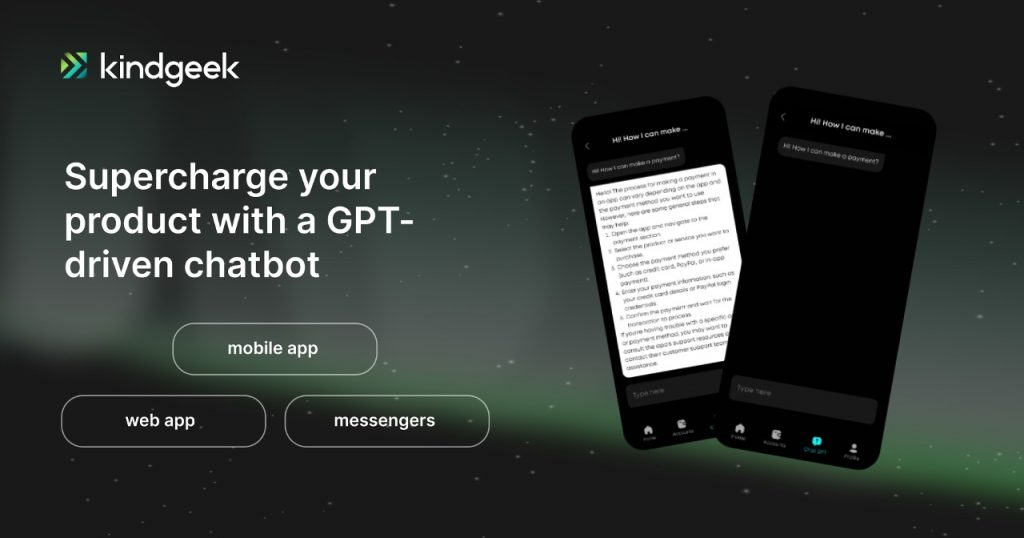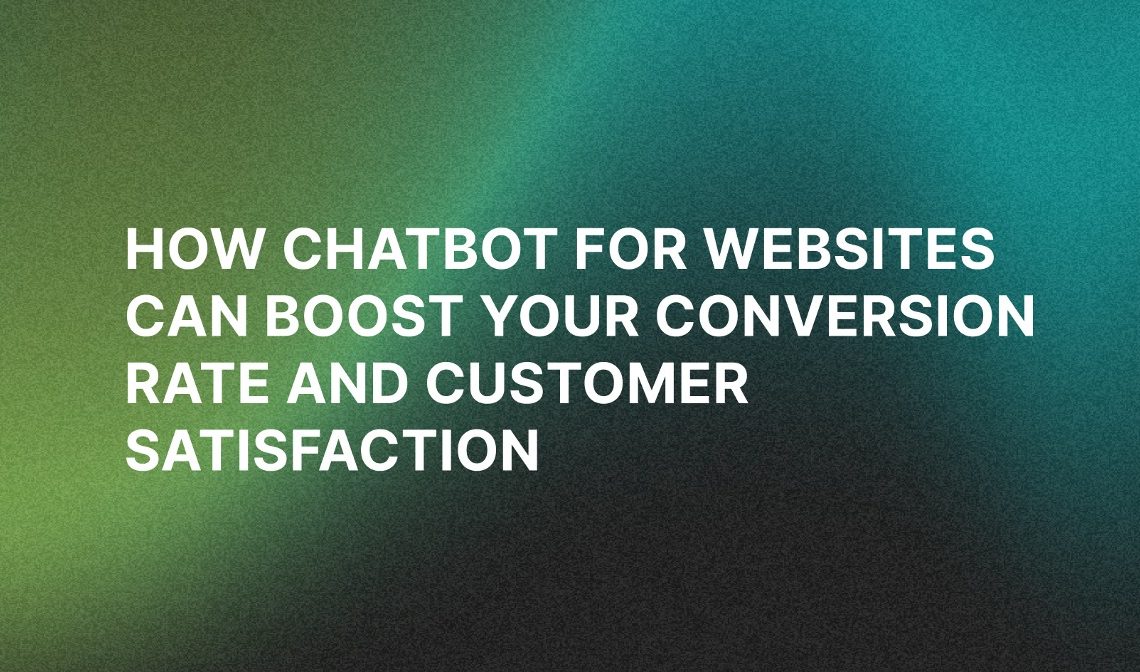In today’s fast-paced digital world, providing exceptional customer experience is crucial for businesses to stay competitive. One powerful tool that has gained immense popularity in recent years is the chatbot – a software program powered by artificial intelligence (AI) that simulates human-like conversations.
By integrating chatbots into your website, you can offer 24/7 customer support, streamline processes, and enhance user engagement. These AI-driven virtual assistants have revolutionised how businesses interact with their customers, offering a seamless and personalised experience that meets the demands of the modern consumer.
In this article, we’ll explore the benefits of implementing chatbots for websites, dive into the various types and use cases, and provide insights into choosing the right chatbot solution for your business needs.
Why should you consider adding a chatbot to your website?
So AI chatbot software for websites can be useful, but how useful is the real question? Let’s discover some of the benefits first:
Round-the-clock support
That`s one of the first things you will notice about chatbots – they are available 24 hours, 7 days a week. You are for sure losing customers because of the unanswered questions they have in “out of working” hours. A virtual assistant can answer all of the questions and inquiries without getting tired, sick, or going on vacation.
Web chatbot can also become game-changers for businesses that operate globally or have customers in different time zones, as it allows them to provide instant support, regardless of location or time of day.
Cost and Time Savings
While there may be initial development costs, this expense is much lower than the usual customer assistance model that involves employee training, employee compensation, infrastructure costs, and different essential aids. In the long run, chatbots do not require salaries, overtime payments, or benefits, and they can handle multiple queries simultaneously, which means businesses can save money on staffing costs.
Moreover, chatbots can help businesses reduce the number of human errors and eliminate the need for repetitive tasks, which can further reduce operational costs.
Bounce rate reduction and Interaction increase
Bounce rate is the percentage of visitors who load one page on the website and then leave without any interaction with the page or visit any other of the web pages. By adding a website chatbot, you can reduce bounce rates by providing navigation help from the start. Chatbots can route customers to the appropriate page, whether an information page, a product website, or even a live agent.
Chatbots can also provide a more personalised and interactive experience by collecting data on customers’ previous interactions with your website and using it to tailor their responses and recommendations to each individual customer.
Data collection and analysis
Data collection is useful not only for a better user experience but also for many business needs. By collecting and analysing data, you can gain valuable insights into customer behaviour, preferences, and needs, which can help make data-driven decisions and improve your operations.
Chatbots are famous for automating data collection and data processing. They can also easily detect patterns, trends, and insights in real-time that businesses can use to improve their products, services, and customer experience.
Lead Generation and Qualification
With all of the benefits mentioned above, chatbots increase users’ satisfaction and the possibility for them to become customers. Additionally, by initiating conversations and guiding users through the sales funnel, chatbots can help increase conversion rates and generate more qualified leads. They can be used as a stand-alone tool or in combination with other tools and methods like CRMs, email marketing, etc.
24/7 chatbot support comes in handy here as well because it means that businesses can capture leads even when their human representatives are not available.
If there are so many benefits of chatbots for websites, there are some interesting and famous cases, right? Sure, we have a couple of examples for you:

IKEA
IKEA is a Swedish multinational retailer that is one of the world’s largest furniture providers. IKEA presents their own website chatbot, “Billie”, to answer the most popular questions and to guide customers about innovative designs and a steadfast commitment to sustainability in real life.
Vainu
Vainu is a data analytics service that provides customers with support on the website through their VainuBot. Visitors can quickly get some answers about service or site navigation. At the end of the conversation, the bot asks for their email address so they can book a demo or send a report.
DBS Bank
DBS Bank introduced a chatbot named DBS digibot on its website and mobile banking app to enhance customer engagement and support. DBS Digibot offers personalised financial advice, investment recommendations, and product information based on the user’s financial goals and preferences. The chatbot can assist customers with account management, transaction inquiries, and digital banking services.
Hubspot
Hubspot is an American developer and marketer of CRM and email marketing. They created a chatbot for website, “HubBot”, that simplified the questioning process. Now clients are only asked the relevant questions in the form of short messages. Therefore, the company can now provide better and customised products to clients.
Steps to Designing a Chatbot for Your Website
If you would like to know all of the intricacies of developing an intelligent chatbot for customer support, we would suggest reading our detailed article on this topic. But let`s outline some of the main steps here as well:
Fine-tuning
If you decide on a gpt-powered solution, you need to understand that it needs to be customised to give relevant outputs to the customers. And this can be done through fine tuning – the process that helps to optimise the model for a specific use case or domain for better performance.
Here you have a couple of the most popular options: GPT3, GPT-3.5 Turbo, and GPT-4. Whatever your AI model preference is, or if your choice lies beyond OpenAI models, Kindgeek experts are capable of customising it for your business use cases and seamlessly integrating it within your product and communication channels.
Security
Security is an all-time priority for any business, especially fintech. We suggest following a fine-tuning approach because it ensures a sufficient security level by making the fine-tuned AI model a completely private one.
However, to grant the utmost security and compliance with essential regulations and standards, it’s crucial to employ additional safeguards and stick to the best industry practices. Some of them are multi-factor authentication, no sensitive data for AI models, data moderation layer, and end-to-end encryption.
Exploring potential challenges and risks and mitigating them
AI models are very advanced and useful, but that doesn’t mean they are perfect. In some cases, they may fail to produce a correct response by inadvertently generating answers that are inaccurate or misleading.
Bias is another problem of AI. Depending on data quality and training accuracy, the model might develop conflicting or biased viewpoints reflected in its responses.
AI chatbots for website may also give out a confident response that is not justified by its training data. “Plucked out of the air”, so to speak. This phenomenon commonly happens when the AI models are confronted with ambiguous or novel queries that fall outside their training data.
You can mitigate those challenges by following the next steps:
- Proper training. This iterative process involves feeding the chatbot with vast amounts of data and allowing it to learn from various interactions, which enables it to understand user inputs better and provide more accurate and relevant responses.
- Quality training data. By exposing the model to high-quality representative datasets, developers can fine-tune its parameters and optimise its performance, leading to higher accuracy and efficiency during inference.
- Thorough testing & model improvement. In-depth iterative testing and fine-tuning are essential to address potential issues, biases, and limitations, as well as to keep the model up-to-date with product updates and changing user needs.
If you would like to speed up the intricate and time-consuming process of developing your own bot for website, we suggest a trusted solution, such as Kindgeek AI Support Assistant.

We offer a comprehensive suite of AI chatbot services to help you seamlessly integrate your custom smart chatbot powered by OpenAI models and beyond. From technical advisory services to end-to-end integration and prompt engineering, the Kindgeek expert team is dedicated to meeting unique business needs at any point along the digital transformation journey.
Conclusion
As the digital landscape continues to evolve, chatbots for website has become an indispensable tool for businesses seeking to stay ahead of the curve. These AI-powered virtual assistants offer a range of benefits, from providing round-the-clock customer support to streamlining processes and enhancing user engagement. With their ability to handle repetitive tasks, offer personalised recommendations, and adapt to customer preferences, chatbots have proven to be game-changers in the world of customer experience.
However, it’s crucial to remember that successful chatbot implementation requires careful planning, continuous optimisation, and a deep understanding of your target audience’s needs and preferences. Businesses must strike a balance between leveraging the power of AI and maintaining a human touch, ensuring that customers feel valued and their inquiries are addressed with empathy and precision.
Can you integrate your chatbot with other tools and platforms?
Yes, most modern chatbot platforms and solutions allow integration with various other tools and platforms. It allows chatbots to access data from multiple sources, perform cross-platform actions, and provide a seamless omnichannel experience for users.
What are the main benefits of chatbots software for website?
To name a few: round-the-clock support, cost and time savings, bounce rate reduction and interaction increase, data collection and analysis, and lead generation and qualification.
What are some popular chatbot platforms for banking?
Check out our article to learn about the best AI chatbots to integrate into banking solutions.




